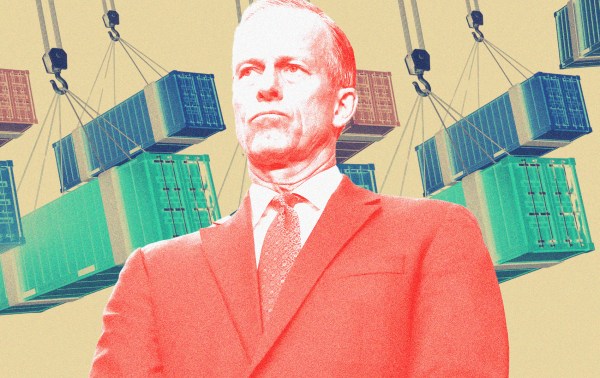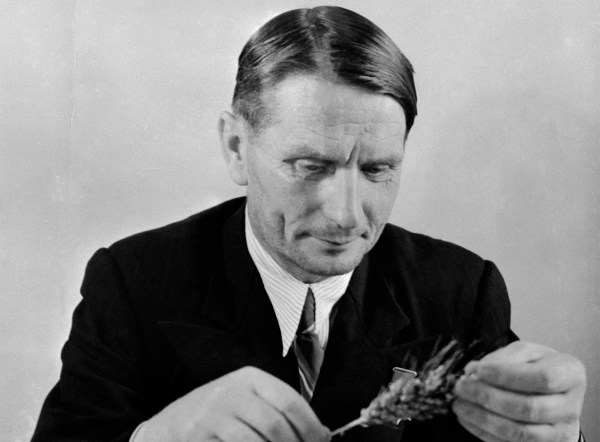On May 12, 59 white South Africans arrived at Dulles International Airport outside Washington, D.C., the first batch of Afrikaners granted refugee status by the Trump administration.
In a press conference at the White House later that day, President Donald Trump claimed that a “genocide is taking place” in South Africa and that “land is being confiscated” from white landowners. “It’s a genocide that’s taking place, that you people don’t wanna write about,” Trump said. “But it’s a terrible thing that’s taking place. And farmers are being killed. They happen to be white, but whether they’re white or black makes no difference to me. But white farmers are being brutally killed, and their land is being confiscated in South Africa.”
There is no ongoing genocide occurring in South Africa. And while the government did enact a law last year allowing for the confiscation of land without compensation, no property has been seized under its authority.
When asked why the president believes the current situation in South Africa constitutes a genocide, a White House administration official told The Dispatch Fact Check, “The 59 Afrikaner refugees who arrived in the United States have told us harrowing stories of discrimination and persecution in South Africa—violent attacks; vandalism of property; death threats; racial slurs against farmers; massive mobs singing songs calling for the death of Afrikaners; and laws that prevent many from finding work. And a government that, at a minimum, does not respond.”
The United Nations defines genocide as “acts committed with intent to destroy, in whole or in part, a national, ethnical, racial or religious group,” such as murdering and causing severe physical or mental harm to individuals of that group, “deliberately inflicting” conditions on the group threatening their survival, measures designed to prevent new births in the group, and forcibly taking away the group’s children. While homicide rates in South Africa are alarmingly high and have steadily increased over the last decade, there is no evidence suggesting Afrikaners—white South Africans of Dutch descent—are victims at higher rates than black South Africans or any other racial group.
The South African government does not collect or publish crime data that includes the race of the victim, making potential racial discrepancies in crime reporting difficult to decipher. However, one government department, Statistics South Africa, published a survey in August 2024 that asked South African residents for information, including their race and whether they had been victims of a crime. The largest racial disparity occurred among victims whose homes were deliberately damaged, with such incidents reported by 1.3 percent of white South Africans and 0.4 percent of black South Africans. In other categories, 6.7 percent of white South Africans said they were victims of a housebreaking versus 5.7 percent of black South Africans, 3.4 percent of white South Africans experienced theft of private property in comparison to 3.1 percent of black South Africans, and 1.1 percent of both racial categories were victims of a home robbery. The survey added that because so few households reported having any murder victims, it did not have a large enough sample size to provide accurate estimates representative of the broader population.
Violent crime in South Africa, particularly homicide, has become a persistent cause of concern. In 2022, the last year for which homicide statistics are reported for South Africa on the United Nations Office on Drugs and Crime’s online database, there were a total of 27,272 homicides in the country. That’s about 43.72 homicides per 100,000, the second-highest per capita homicide rate of any country to publicly release crime data, behind only Jamaica, and nearly seven times the per-capita rate in the U.S. for 2022.
Data suggests that the bulk of the crime occurs in several concentrated, urban areas. Still, the South African countryside is not free from violent crime. In 2024, there were a total of 436 murders and 328 attempted murders that occurred on farms, agricultural plots, and small land holdings, according to South Africa’s crime reports. Only a subset of these murder victims were killed on farms located in rural communities, as defined by government officials. In 2024, 44 people were killed on farmland in rural communities, at least 24 of whom were farmers or farm-dwellers, as opposed to workers, security officers, or visitors. Dating back to January 2022, 161 South Africans have been killed in rural communities.
Trump’s claim that genocide is occurring in South Africa is not supported by the facts. Neither is his assertion that white South Africans are having their land confiscated. South Africa’s government has undertaken efforts to increase land ownership among black South Africans who, before 1994, faced outright discrimination under the state’s apartheid system and were not permitted to collectively own more than 13 percent of the country’s land. Many black South Africans were forcibly relocated away from their land under apartheid rule. Since the end of apartheid in 1994, South Africa’s government has primarily relied on “willing buyer, willing seller” land reforms, where the government purchases land from willing white South African owners at a negotiated price, which it then sells or leases to black South Africans.
A government-commissioned land audit in November 2017 showed that white South Africans—representing about 7.3 percent of the country’s population, per a 2022 census—collectively owned about 72 percent of the country’s privately held land. In comparison, black South Africans collectively owned 4 percent of privately held land, per the audit, despite comprising 81.4 percent of the population. This has prompted some in South Africa’s government to argue that drastic reforms are needed to achieve more substantial progress in righting past wrongs.
South African President Cyril Ramaphosa in 2024 signed into law a revised expropriation act, allowing the government to seize ownership of a property “for a public purpose or in the public interest”—including race-based land reform—with no compensation in cases the government deems “just and equitable.” Critically, the statute does not provide a framework for what is considered “just and equitable,” though government officials have suggested it will target only land not currently being used.
Trump has publicly attacked South Africa’s alleged land seizure scheme in the past, characterizing it in early February as a “massive Human Rights VIOLATION.” In response, Ramaphosa stated on social media, “The South African government has not confiscated any land. The recently adopted Expropriation Act is not a confiscation instrument, but a constitutionally mandated legal process that ensures public access to land in an equitable and just manner as guided by the constitution.” It’s true that South Africa has not seized any land without compensation, but as a Voice of America news article noted at the time, Ramaphosa was incorrect when he said the expropriation law is “not a confiscation instrument.” Indeed, the statute itself defines “expropriating authority” as state efforts “to bring about the compulsory acquisition of property … for a public purpose or in the public interest.” By making it legal for the government to acquire property when considered “just and equitable” and in the public interest, the law serves as both a “confiscation instrument” and a “constitutionally mandated legal process.”
In April 2018, a dispute arose when the government ordered the expropriation of two properties owned by the company Akkerland Boerdery, which it used as a hunting reserve. As this was prior to the 2024 expropriation law, the government was still required to pay a “just and equitable” compensation—terms the statute again does not define, and not necessarily based on fair market value. The government offered 20 million South African rand (about $1.1 million), but the Akkerland Boerdery owners said the property was worth 10 times that amount. Ultimately, Akkerland Boedery successfully challenged the expropriation in South African court, and later sold the properties to a private mining firm, MC Mining, for R 80.5 million (about $4.5 million).










Please note that we at The Dispatch hold ourselves, our work, and our commenters to a higher standard than other places on the internet. We welcome comments that foster genuine debate or discussion—including comments critical of us or our work—but responses that include ad hominem attacks on fellow Dispatch members or are intended to stoke fear and anger may be moderated.
With your membership, you only have the ability to comment on The Morning Dispatch articles. Consider upgrading to join the conversation everywhere.